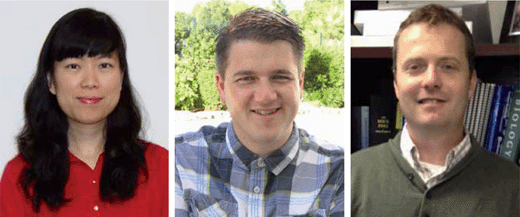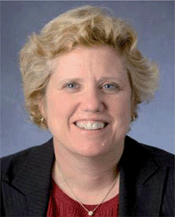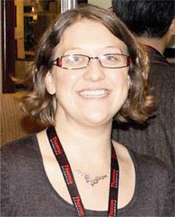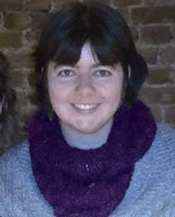A new look for a New Year
Welcome to issue 1, 2014 of Analytical Methods, and we wish you a very Happy New Year from the Analytical Methods team! As you have probably noticed, Analytical Methods has a new look this year. With a wonderful new style and logo, Analytical Methods has changed as part of the new visual identity for the Royal Society of Chemistry. We are the oldest chemical society publisher in the world, publishing our first paper in 1841. Since then the world has changed significantly but chemistry and the chemical sciences are as fundamental as ever. Looking at how we are seen in the chemistry community gave us a chance to refresh our brand and identity. As an organisation we have ambitious goals, to be the leading voice and trusted partner for science and humanity, and in order to do this we need to build a greater awareness of the Royal Society of Chemistry. We undertook large scale research to help us understand how we could develop our brand, communicating with 7000+ individuals from our community. You may have taken part in this research: through our online survey, one of the focus groups or a telephone interview? This research helped us to clearly define how we can build on our strengths, such as our international readership, fast publication times and a high quality editorial service. Moving forward, all articles will be printed with free full colour with our refreshed layout. We are very proud of our heritage and even more excited about our future. We hope you enjoy the new look!The beginning of 2013 saw Susan Lunte, University of Kansas, USA, take over as Editor-in Chief of the Editorial Board. Working at the Adams Institute for Bioanalytical Chemistry, she specialises in bioanalytical chemistry, pharmaceutical and biomedical analysis. We have been working together to continue the development of the journal, with a focus on publishing applications of analytical research that have clear societal impact and significance. We look forward to building on this in the coming few years.
We would also like to take this opportunity to thank the previous Editor-in-Chief, Brett Paull, University of Tasmania, Australia, for all his dedication and contributions to the journal. We have seen a remarkable growth in submissions and publications in this time, with over 200% increase in articles published between 2010 and 2012, and Analytical Methods last year moving from 12 issues a year to 24. The journal received its first full Impact Factor of 1.855 last year (2012 Journal Citation Reports® (Thomson Reuters)), and Analytical Methods remains one of the fastest growing general analytical science journals. We are pleased to say that Brett will continue to be involved with Analytical Methods as a member of the Advisory Board. We are expecting great things from this new journal, so watch this space!
We are delighted to welcome Lingjun Li from the University of Wisconsin-Madison, USA, Craig Banks, Manchester Metropolitan University, UK and Scott Martin from Saint Louis University, USA as new Associate Editors. They are handling the increasing number of high quality papers in the area of pharmaceutical analysis and drug discovery; materials and nanotechnology, electroanalysis, security and forensics; and bioanalytical and pharmaceutical analysis, respectively.
Lingjun Li
Craig Banks
Scott Martin
From the middle of 2013, authors may have noticed a change in how the peer-review of their paper is handled. When Analytical Methods was launched, we had three Associate Editors for the journal, based in different geographical regions: Europe and the Middle East, Asia and Pacific, and the Americas. As the journal has grown, we have appointed a number of additional Associate Editors. This has also provided us with the opportunity to expand the range of subject expertise that is represented. Therefore as a submitting author, you will now find that you can choose an Associate Editor in the corresponding subject area to your article. The details for the areas each Editor covers can now be found on the ScholarOne website, when you are submitting your article.
During 2013, we also welcomed the following Editorial Board members: Jonas Bergquist, Uppsala University, Sweden; Emanuel Carrilho, University of São Paulo, São Carlos, Brazil; and Jim Luong, Dow Chemical Canada ULC, Canada. As well as providing representation with a wide geographical spread, we are excited about the experience and expertise they will all bring to the Board.
Jonas Bergquist
Emanuel Carrilho
Jim Luong
Alongside this the Royal Society of Chemistry is happy to announce the appointment of Hiromitsu Urakami as the Royal Society of Chemistry representative in Japan. He is looking forward to working with Analytical Methods authors, readers and referees on non-editorial matters.
We would also like to warmly welcome several new Advisory Board members to the Analytical Methods journal team: Ryan Bailey, University of Illinois at Urbana, USA; Lane Baker, Indiana University, USA; Adam Woolley, Brigham Young University, USA; Donal Leech, National University of Ireland, Ireland; Koji Otsuka, Kyoto University, Japan; Lokesh Joshi, University of Ireland, Ireland; Miguel Valcarcel, University of Cordoba, Spain; Ulrich Panne, BAM-Federal Institute for Materials Research and Testing, Germany; and Susan Martin, St. Louis University, USA.
We thank our existing Associate Editors, Editorial and Advisory Board members for their hard work and dedication to the journal this past year which is very much appreciated, and look forward to working with them in 2014.
We had a number of wonderful themed issues last year, starting with the Cosmetic Ingredients themed issue,1 which highlighted papers from the cosmetic to the human body and the environment. We also compiled two exciting cross-journal web themed issues, in partnership with Analyst. The first, on Security and Forensics,2 highlights a collection of papers on a range of new developments within the field of forensic science. The second, Molecular Analysis for Art, Archaeometry and Conservation,3 contains a collection of papers on the cutting edge analytical research from academia, national laboratories and museums showing the most recent analytical breakthroughs in the field of cultural heritage. Both are available from the Analytical Methods website. There were also on-going web collections on Food and Packaging, describing the latest developments in food analysis and analytical research on food components arising from changes during food processing, packaging and storage, as well as Chemometrics4 – offering a series of tutorial reviews to provide knowledge on the application of basic tools for researchers with no background in chemometrics.
Coming up in 2014 we have a selection of exciting topics that will be highlighted including: Emerging Analytical Methods for Global Energy and Climate Issues; Clinical Diagnostics; and another cross-journal web themed issue with Analyst looking at Analytical Science in Brazil. Please do get in touch with us if you are interested in contributing to any of these issues.
Members of the Editorial team will be out and about at a range of conferences throughout the upcoming year, including HTC-13, Pittcon, GRC Bioanalytical Sensors, SCIX 2014, and the 65th Annual Meeting of the International Society of Electrochemistry among others. Please do get in touch with us if you will also be attending, we would be delighted to talk with you about the journal and future developments.
Reaching the right audience is key, and Analytical Methods editors will continue to work together with Analyst to provide authors with the best possible home for their research. We will continue to highlight Hot Articles published in the journal on the Analytical Methods blog with the help of our blog writers from around the world; communicating the most exciting research, news and opinions from the analytical chemistry community.
The Royal Society of Chemistry is also supporting Open Access, with authors able to choose between Gold and Green Open Access routes. To support the funder-led evolution to Gold OA, our Gold for Gold5 initiative rewards all institutions that subscribe to the RSC Gold journal package with voucher codes to make papers available via OA, free of charge. We are also delighted to announce that we are developing a new subject-based repository that will make it easier for researchers to find and share relevant journal articles and data from a single point of access. The Chemical Sciences Repository6 will offer free-to-access chemistry publications and integrated data in a single place. The article repository is a central point through which users can access the Royal Society of Chemistry's open access articles, whether they are funded immediate open access articles, or articles that must be made open access after an embargo period, such as those funded by RCUK, the Wellcome Trust or NIH.
Finally, we would like to take this opportunity to thank all our authors, referees and readers for your continued support and to wish you a very happy and prosperous New Year!
Susan Lunte, Editor-in-Chief, Analytical Methods
May Copsey, Managing Editor, Analytical Methods
Rebecca Brodie, Deputy Editor, Analytical Methods
References
- Anal. Methods, 2013, 5, 309–310 10.1039/c2ay90060b.
- Anal. Methods, 2013, 5, 5375 10.1039/c3ay90068a.
- Analyst, 2013, 138, 7276–7278 10.1039/c3an90096g.
- Anal. Methods, 2013, 5, 3785–3789 10.1039/c3ay90051g.
- http://rsc.li/goldforgold .
- http://rsc.li/repository .
| This journal is © The Royal Society of Chemistry 2014 |





